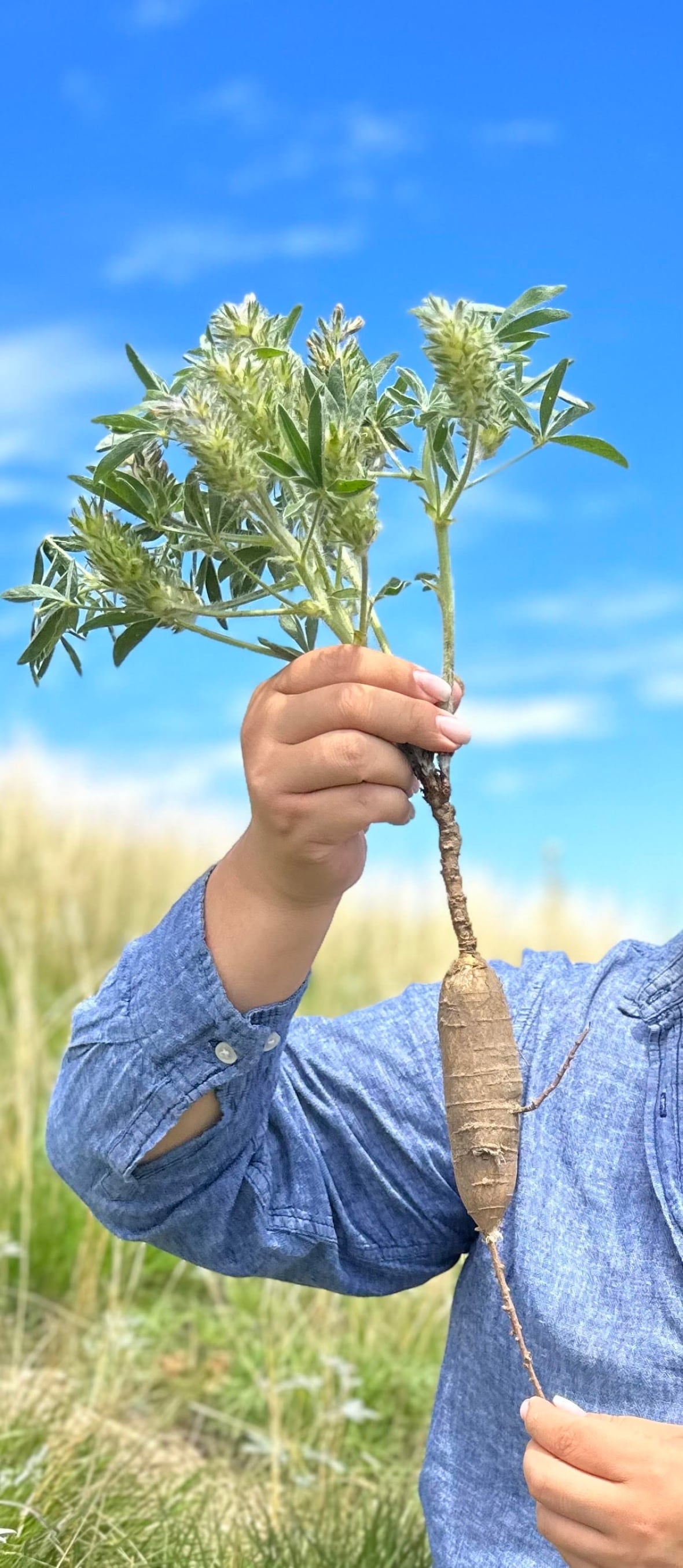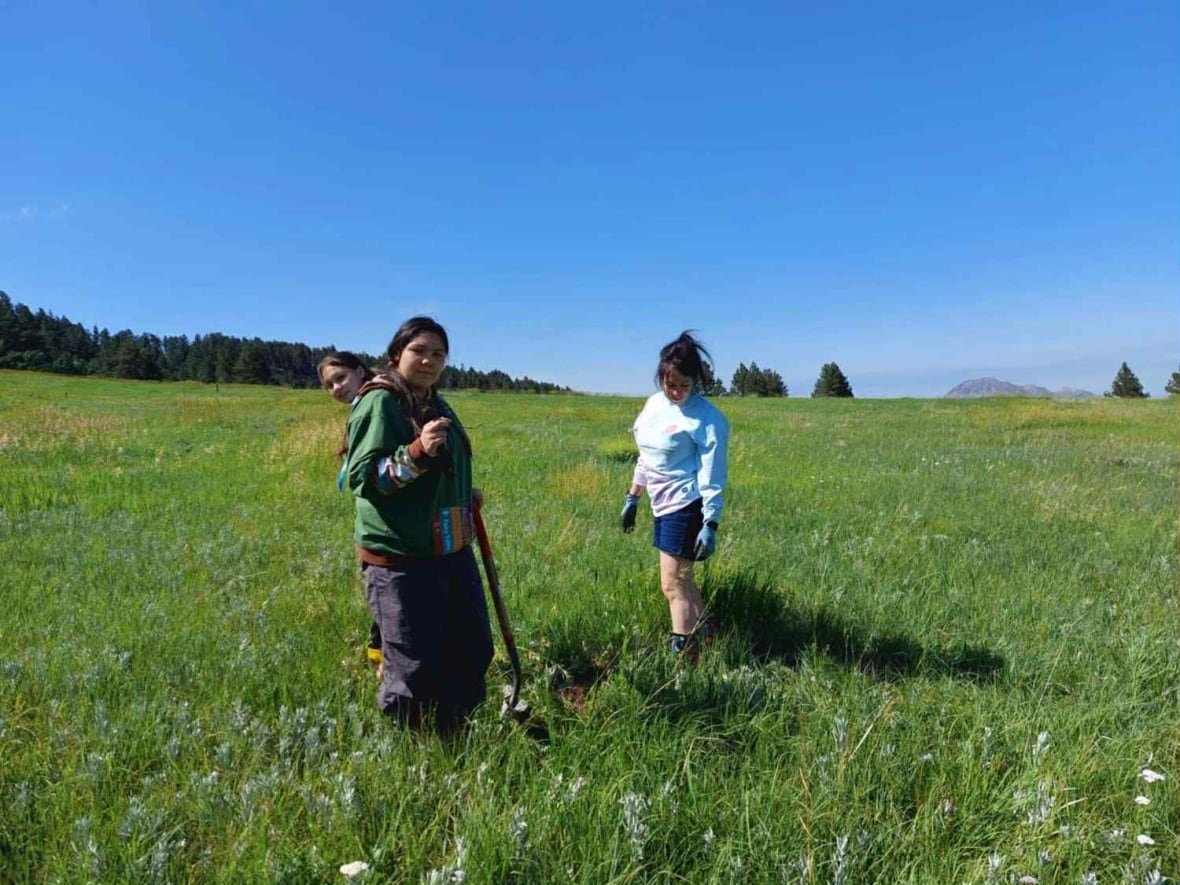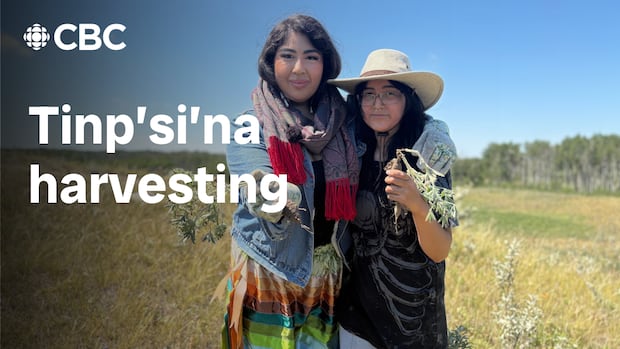Tinp'si'na is still being harvested by Nakota families as a traditional food source and medicine
'I like the thought of this plant, like First Nations people... still alive,' said Heather O'Watch
Heather O'Watch says harvesting tinp'si'na (wild turnip in the Nakoda language) in June is a time to pass along traditions and teachings to family and friends.
She said she harvests with her sibling Kenny Sheperd-O'Watch, 14, and she used to harvest with her dad, Woodrow O'Watch, who learned the skill from his grandparents when he was just a boy.
"It was really phenomenal that 50 years later, here I am," she said, because all these years later she is still out picking with her family.
O'Watch first heard about wild turnips back in 2018 when she was visiting down in South Dakota, where they picked so many, it made her ask her dad about them.
"It's a really good plant to have. You can cook with it, you can trade with it and you can give it away," said O'Watch, who's from Okanese First Nation in Saskatchewan about 120 kilometres northeast of Regina.
She said First Nations in Saskatchewan once traded wild turnips for goods with Ukrainian settlers, and later showed them where to find them so they would have a food source during famine times on the prairies.

Tinp'si'na are seasonal plants, she said, and they're ready to be harvested earliest in May but in late June they're the biggest.
O'Watch said tinp'si'na like to grow on hills and coulees, often sticking out in the hot sun. The have a purple hue and the yummy part is about 6 inches in the ground, she added.
"You can be out in the hot sun, but once you get them picked it is rewarding to braid them," said O'Watch.
O'Watch said tinp'si'na were a food source for Plains Peoples that could be boiled, dried or eaten raw.
"Women used to go out and take their children out and so the kids would go and look for them, spot them, and the woman would dig them and then braid them," said O'Watch.
She said after the introduction of invasive plants to this area, she is surprised the wild turnip is still thriving.
"This plant is resistant. It's still here. You could still find it in the untouched areas like this part here, out in the pasture here... I like the thought of this plant, like First Nations people, despite everything around us changing, it's still alive," said O'Watch
Food and medicine
Just like O'Watch, picking wild turnips is something Jim Red Eagle, 69, likes doing with his wife and daughters home in South Dakota.
Red Eagle, from Carry the Kettle Nakoda Nation, learned to harvest tinp'si'na as a young boy with his grandparents.
He said the month of June is known as "Tinp'si'na Itkáȟča Wi", which means when the tinp'si'na flowers open or go to seed in the Nakoda and Lakota languages.

"They have the taste similar to a mushroom," said Red Eagle, who makes soup and pemmican with them.
Tinp'si'na are not only a food source but can be used as a medicine as well, Red Eagle shared.
Red Eagle, who is a knowledge keeper, said tinp'si'na is rich in vitamins C and K, and also contains fibre to promote digestive health.
The teachings of tinp'si'na as medicine were passed down to him from his grandparents and uncles, Red Eagle said, and now he tells them to his daughter as they pick.
He says there are lessons he shares with his family about how to braid the turnips together, but also about what it represents.
"That's the reason why we braid in three strands. For our family, our people and food is medicine," said Red Eagle.
WATCH | Why tinp'si'na are braided
O'Watch shared harvesting is a fun activity to do with your family to connect to land and culture but its good if your ever stuck in the middle of nowhere and have no food, you'll be able to rely on the tinp'si'na if you know how to find it.
"I really made it a mission every year to continue harvesting turnips with family and friends," said O'Watch.



